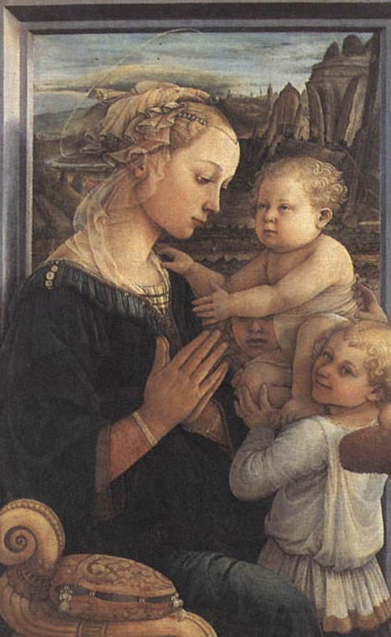Madonna with Child and Two Angels

This painting, unquestionably the friar/painter's most famous work, is also one of the most admired and copied in the Gallery when it arrived in 1796 from the villa medicea of Poggio Imperiale.
Perhaps its popularity also stems from the belief that the young woman portrayed as the mother and bride of Christ, wearing a lovely gown, her hair entwined with precious pearls, bears the enchanting profile of Lucrezia Buti, the nun scandalously loved by the friar/painter who gave him a daughter and a son. It has also been suggested that the face of the little angel turned smilingly toward the spectator, a subject later dear to Botticelli, is a portrait of the artist's son Filippino, the futer ainter who followed Filippo even as a young boy, along with his eldest disciple, Fra Diamante, in his father's last undertaking of the Spoleto Duomo. But the group of the three children, standing out from the frame with delicacy similar to the classical-style reliefs of Donatello and Luca della Robbia, is not taken from nature, but derives instead from ancient prototypes, perhaps a sarcophagus depicting Phedra with cupids.
The background beyond the window, a painting-within-a-painting, seems to anticipate the expansive landscapes of Leonardo.









